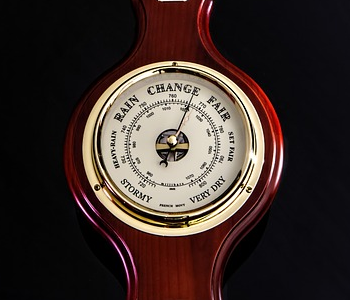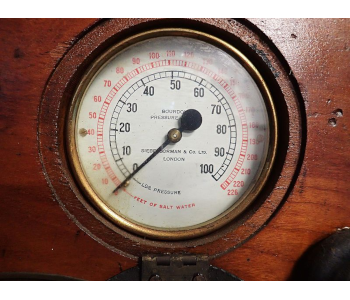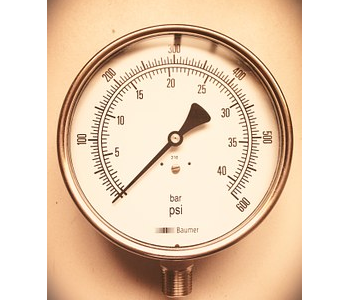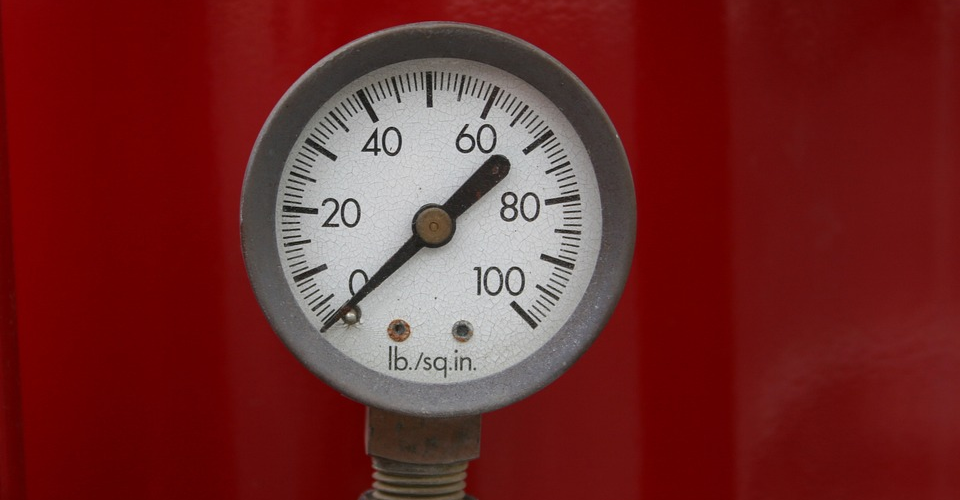What is Gauge Pressure – how is it defined?
Let’s start with an irrefutable statement: there is atmospheric pressure everywhere on Earth. Atmospheric is what allows us to breathe, allows planes and helicopters (and birds!) to fly, and keeps all the gases we need to survive right where we need them. Why, then, does your flat tire indicate zero pressure when it falls flat?
The answer merely lies in perspective. The pressure gauge that you connect to your tire, as well as many other pressure gauges connected to pipelines and industrial equipment, does not show the absolute pressure. Instead, it shows gauge pressure – which is a somewhat related value. What is gauge pressure anyway, and how does it relate to atmospheric pressure?
Atmospheric pressure – it’s everywhere

Wherever you go within the planet, you are subjected to atmospheric pressure. We have just become so accustomed to it that we barely perceive it. As its name implies, atmospheric pressure refers to the pressure that we all feel due to the atmosphere that’s present all around us. The atmosphere, in this context, is merely composed of the gases that are bound to the surface of the Earth due to gravity.
Atmospheric pressure plays a vital role in the respiration of humans and animals alike. When we breathe, we regulate the pressure in our lungs, therefore allowing air to move in and out via pressure. The atmospheric pressure also counteracts the internal pressure in our bodies due to blood circulation. If you’ve seen a movie where a character dies in outer space because of ruptured blood vessels, that’s actually something that will happen without atmospheric pressure – although probably not as dramatic.
Atmospheric pressure is also what makes it possible for helicopters, drones, and bird to generate lift. For instance, the rotation of the rotors of a drone allows it to fly by blowing wind downwards and pushing it against atmospheric pressure.
The effect of atmospheric pressure becomes more pronounced when you move to a higher altitude. The atmospheric pressure at sea level is about 1 bar or 14.7 psi (pounds per square inch). At the peak of the Andes, which is almost 7000 meters above sea level, the atmospheric pressure drops to about 0.4 bar or 6 psi. This is because the effect of gravity the further away you are from the source, which is the Earth’s core.
At such high altitudes, the drop in atmospheric pressure makes it much harder to breathe. This is the reason why a few hundred people have died attempting to climb Mount Everest – the low atmospheric pressure at these extreme altitudes simply makes it uninhabitable for humans. This is also the reason why there is a limit to the altitude that a helicopter can fly, which is about 7600 meters.
With a fundamental understanding of what atmospheric pressure is and its importance, we can now move on to the next topic – the concept of gauge pressure and how it’s different to absolute pressure.
Absolute pressure – the sum of all pressures

In addition to atmospheric pressure, there are a couple of other sources and situations that will produce different types of pressure. A standing column of liquid, such as water in the storage tank, exerts hydrostatic pressure. A flowing liquid in a pipe also exerts pressure, the magnitude of which depends on the speed at which it is flowing and the nature of the liquid. In our tire example, the pressure of the air inside the tire is a function of how much air has been pumped into the relatively fixed volume of the tire.
In real-world circumstances, we are mostly concerned with the pressure exerted by the material we are measuring. In the case of the water tank, we want to know the pressure exerted by the water, which is an indirect indicator of the water level inside the tank. In a car tire, the pressure of the air inside the tire lets us know if the tire needs to be inflated.
However, the ever-present atmospheric pressure makes it almost impossible to measure the pressure exerted by the water in the tank and the air in the tire independently. After all, the same atmosphere that we breathe also exerts pressure to the water inside the tank and the air inside the tire. This total pressure is what we refer to as absolute pressure.
Gauge pressure – just the numbers that we need

The thing about absolute pressure is that nobody wants to have to do some basic math operation whenever they look at their tire gauge. To simplify the matter, the concept of gauge pressure was developed, which is the difference between the absolute pressure and atmospheric pressure.
For example, the recommended pressure for your tires should be 35 psi. Using the concept of your gauge pressure, you can simply inflate your car tire until the pressure gauge reads 35 psi. In reality, your car tire actually has an absolute pressure of 49 psi – the sum of the air pressure inside the tire (35 psi) and the atmospheric pressure (14 psi). By eliminating the atmospheric pressure term, the tire gauge shows a zero reading for a completely deflated tire, and not a 14-psi atmospheric reading.
Pressure gauges helpfully indicate if it’s reading gauge pressure by adding a “g” suffix (e.g., 35 psig). In scientific notation, absolute pressure is expressed with an “a” suffix (e.g., 49 psia).
Most pressure gauges used nowadays are of the differential type. These pressure gauges have a vent that actively measures the value of atmospheric pressure and applies the correction to the measured pressure. This is a more accurate method since we know from the previous section that atmospheric pressure can change due to altitude. Humidity and temperature can also affect atmospheric pressure although to a much less pronounced degree.
Less common are sealed pressure gauges, which merely apply a fixed pressure correction on the measured pressure. Since there is no need for active atmospheric pressure measurement, the sensor of a sealed pressure gauge does not need to be vented to the atmosphere.
How to tell if you’re measuring gauge pressure or absolute pressure
As you can imagine, the difference that atmospheric pressure makes on pressure measurement is large enough to be considered critical in most applications. Determining if your pressure sensor indicates gauge pressure or absolute pressure is usually straightforward. The sensor used to measure the pressure of a medium that is independent of the atmosphere usually shows only the gauge pressure. Good examples of these include the pressure gauge in a water supply line or that connected to a hand pump.
Absolute pressure indicators are mostly used when the sensor needs to measure the atmospheric pressure. For this reason, pressure sensors used for meteorological applications typically measure absolute pressure. If your drone has a pressure sensor, it almost certainly measures absolute pressure, which it then uses as an indicator of its current altitude.
Final thoughts
Pressure is one of those concepts that manifest all around us, but many of us have a poor understanding of. It’s kind of like force, except it isn’t. Atmospheric pressure, even if we don’t understand it, is the driving force behind the survival of several species on our planet.
If you work with any type of industrial equipment or machinery, you need to have a firm grasp of what gauge pressure is. It’s not a complicated concept but is instead merely a simplification of the concept of pressure.

